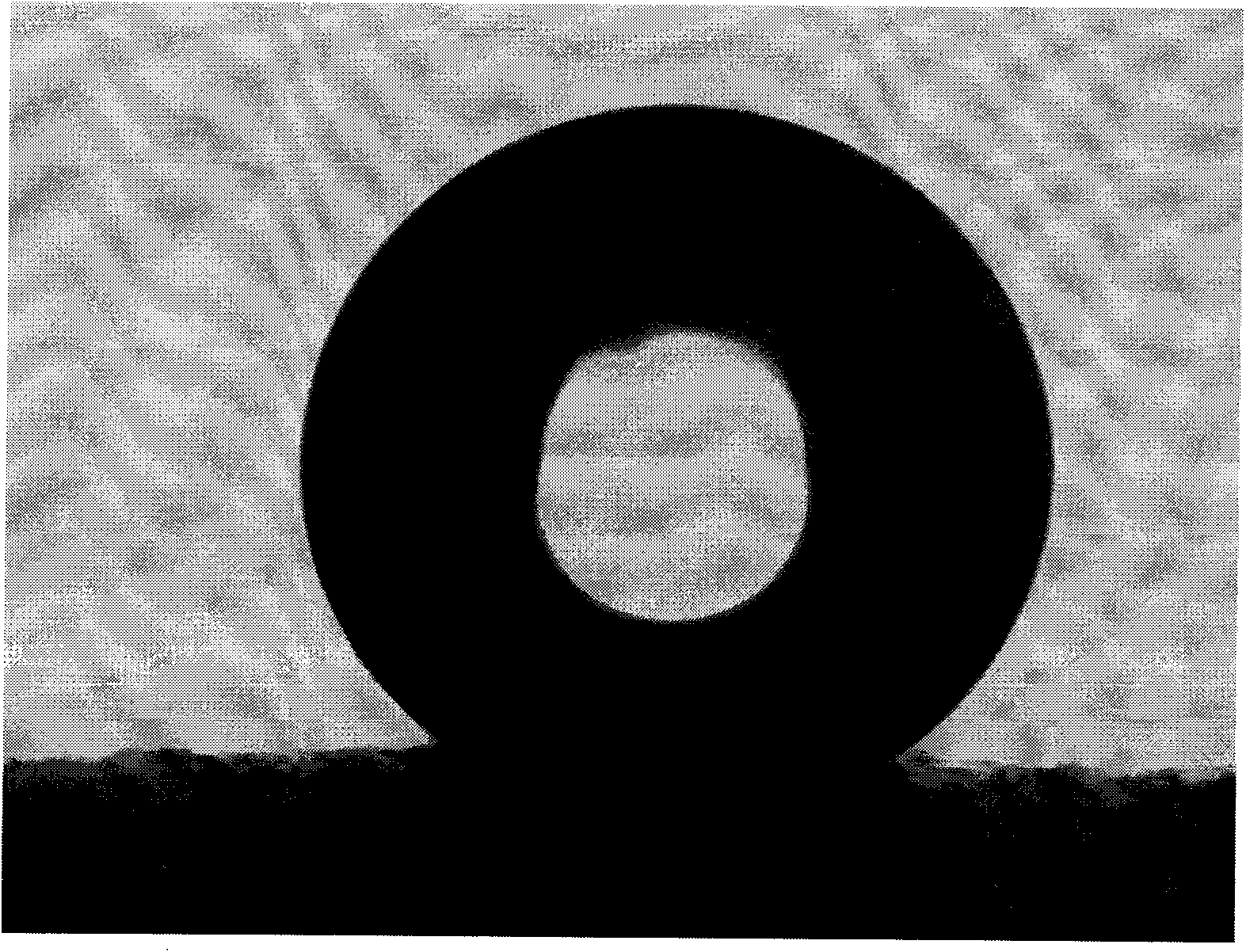Nano-structured surface and in situ forming method thereof
A nanostructure, in-situ preparation technology, applied in the field of nanomaterials, can solve the problems of insufficient water contact angle and high cost, and achieve the effects of large water contact angle, convenient and lasting self-cleaning, and excellent hydrophobic performance.
- Summary
- Abstract
- Description
- Claims
- Application Information
AI Technical Summary
Problems solved by technology
Method used
Image
Examples
preparation example Construction
[0036] In addition, a method for in-situ preparation of a nanostructured surface is provided, comprising: treating a substrate layer with a mixture containing a silicon precursor, a water-soluble catalyst, and a low surface energy compound to form a treated substrate layer; The processed base layer is cured in an ammonia gas atmosphere, thereby forming a nanostructured surface on the base layer. For example, the treated substrate layer is cured at a temperature between 60°C and 180°C, or preferably at a temperature of 60°C to 120°C.
[0037] Examples of silicon precursors include methyltrimethoxysilane, methyltriethoxysilane, vinyltrimethoxysilane, tetramethoxysilane, tetraethoxysilane, gamma-glycidyloxypropyltrimethoxy Amylsilane, Vinyltriacetoxysilane, Aminopropylsilane, Phenyltrimethoxysilane, and mixtures thereof. While not being bound by theory, it is believed that the silicon precursors are rapidly hydrolyzed in the mixture and that condensation reactions also rapidly o...
Embodiment 1
[0043] Example 1: Production of Cotton Fabrics with Self-Cleaning Surfaces
[0044] Fabrication of nanostructured surfaces on cotton fabric substrates. The substrate is treated with a mixture of silicon-containing precursors, water-soluble catalysts, and low surface energy compounds, and cured with ammonia. The silicon precursor used is methyltrimethoxysilane, the water-soluble catalyst is nitric acid, and the low surface energy compound is fluorine-containing alkoxysiloxane.
[0045] First, 2.5 ml of methyltrimethoxysilane was added to 80 ml of nitric acid solution (pH=2), and stirred for 10 minutes to hydrolyze methyltrimethoxysilane. Dissolve 5 g of Dynasylan F8261 (Sivento Silanes trademark, Degussa Company) in 35 ml of ethanol to prepare a fluorine-containing alkoxysiloxane solution. Then, 20 ml of the fluorine-containing alkoxysiloxane solution was added to the methyltrimethoxysilane solution to form a mixture, which was stirred at room temperature for 10 minutes.
[...
Embodiment 2
[0049] Example 2: Production of cotton fabrics with self-cleaning surfaces
[0050] The nanostructured surface was constructed using the same method as in Example 1, except that no silicon precursor was added to the treatment mixture. The water contact angle on the substrate recorded by the contact angle meter was 122 degrees. The smaller contact angle relative to the surface of Example 1 indicates that the surface has a lower surface energy. Thus, the use of methyltrimethoxysilane as the silicon precursor increases the water contact angle on the substrate relative to a surface prepared without the silicon precursor.
PUM
| Property | Measurement | Unit |
|---|---|---|
| diameter | aaaaa | aaaaa |
| diameter | aaaaa | aaaaa |
Abstract
Description
Claims
Application Information
 Login to View More
Login to View More - R&D
- Intellectual Property
- Life Sciences
- Materials
- Tech Scout
- Unparalleled Data Quality
- Higher Quality Content
- 60% Fewer Hallucinations
Browse by: Latest US Patents, China's latest patents, Technical Efficacy Thesaurus, Application Domain, Technology Topic, Popular Technical Reports.
© 2025 PatSnap. All rights reserved.Legal|Privacy policy|Modern Slavery Act Transparency Statement|Sitemap|About US| Contact US: help@patsnap.com


